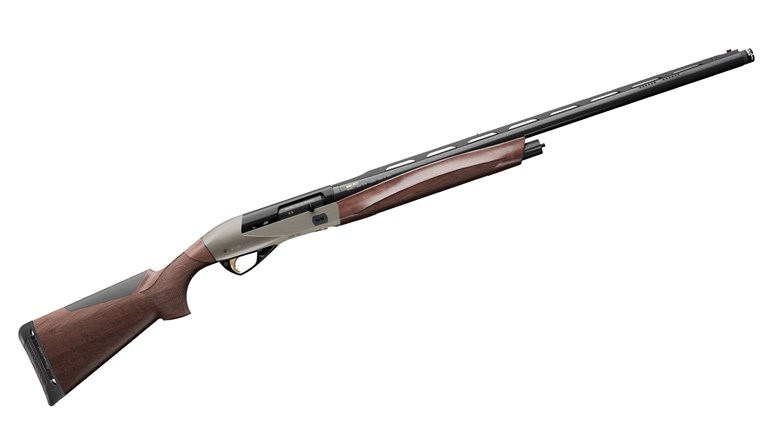
You might think the number of waterfowl hunters in this country roughly parallels the number of ducks and geese available to be hunted. That’s what game agencies and conservation groups thought, and for good reason: In decades past, more ducks and longer seasons in fact did equal higher numbers of waterfowl hunters. When waterfowl numbers dipped, game agencies shortened seasons and reduced daily bag limits, and fewer waterfowl hunting licenses were sold.
Yet, today, waterfowl hunter numbers are dropping steadily—even as hunting opportunities have increased. This shift popped up on the radar of the conservation group Delta Waterfowl more than a decade ago.
“We really started to get concerned that something was going on around 2000,” says John Devney, Delta’s senior vice president. “A report came out that showed a 70 percent decline in waterfowl hunters in Canada from the 1970s to the late 1990s. That got our attention, and we started looking at the situation here.”
The belief, Devney says, was that more restrictive hunting seasons in the early 1990s, coupled with the 1991 nationwide ban on lead shot for waterfowl hunting, pushed out some hunters. But as continental duck and goose populations built during the mid-1990s, and more hunting opportunities were added, the assumption was that lapsed waterfowler hunters would return to their blinds and the marshes. That didn’t happen.
“When we looked at the empirical data, we were still down a full one-third from where we were in the 1970s,” says Devney.
It got worse. Periodic U.S. Fish and Wildlife Service (USFWS) surveys of outdoor recreation found a further 27 percent drop in the number of waterfowl hunters from 2001 to 2006 and a 37 percent decline in waterfowl hunter days spent afield.
“In the Mississippi Flyway, we’ve had 16 consecutive liberal waterfowl seasons,” notes Dale Humburg, the chief waterfowl scientist at Ducks Unlimited. “Yet our hunter numbers have not recovered” from the 1980s.
However, these people didn’t abandon hunting altogether. For the most part, they still appear to be hunting. They’re just not hunting ducks and geese.
“They’re not switching over so much as continuing to hunt other species, especially deer,” says Steve Cordts, the waterfowl specialist for the Minnesota Department of Natural Resources (DNR).
In 2009, the Minnesota DNR conducted a first-ever study of the “lapsed” waterfowl hunter to try to determine why these people left the sport. In 1971, waterfowl hunter numbers peaked in Minnesota at 161,000. The 1999-2000 season still saw 128,000 hunters afield. Last year? Just 88,000.
Surprisingly, “They weren’t dissatisfied with their duck hunting,” says Cordts of most of the lapsed waterfowl hunters surveyed by his agency. “Their satisfaction levels were identical to past surveys of people who were continuing to hunt.”
While there’s no single answer, hunter surveys from the 1990s onward all identify increased work hours and more family obligations as big factors limiting people in their ability to hunt. Cordts thinks some of these lapsed waterfowlers simply ran out of time to hunt deer and ducks. It was one or the other, and they chose the hunt that seemed easiest to do: opening weekend of deer season. Cordts notes that many Minnesota waterfowlers also entered pheasant hunting as pheasant numbers took off there.
“It probably seemed to them that pheasants took a lot less effort,” Cordts says. “You just grab your shotgun, go out and walk.”
When there’s only so much time available, after all, potential effort expended becomes an important deciding factor. Says DU’s Humburg: “Overall, the feeling is waterfowl hunting tends to be more expensive, requires more effort and tends to be less available than other hunting opportunities.”
The perception may not simply be pushing out casual hunters, but providing a barrier to would-be duck hunters.
Devney credits aging Baby Boomers for at least some of the decline, and points to the drop in days afield among those who still hunt. Baby Boomers, the generation born in the aftermath of World War II, are for the most part 60 years old or older now. It’s simply harder for many of them to get out like they did in their 30s and 40s. So even those who continue to hunt often do so less as they get older. And many of these Boomers, no doubt, will stop hunting when health problems get in the way.
Access to waterfowl hunting areas is another problem.
“Based on limited hunter sampling, we have found that lack of hunting access is a primary limiting factor here in Washington state,” says Don Kraege, waterfowl section manager for the state’s Department of Fish and Wildlife. “We have received several federal grants over the past five years to greatly increase our hunter-access programs, and to provide thousands of new acres dedicated to public waterfowl hunting in the Skagit and Columbia Basin areas.”
Washington has lost about half its waterfowl hunters since the 1970s. As part of the effort to retain current hunters and recruit new ones, Kraege’s agency also has beefed up its Internet resources for waterfowlers. An improved website offers county-by-county harvests, regional and local write-ups of duck hunting opportunities and detailed maps. Also included are listings of public boat launches and even duck blinds available for disabled hunters.
Ducks Unlimited, Delta Waterfowl and state game agencies are trying many things to bring in new waterfowl hunters and to keep the ones they currently have. But so many potential factors at work make any solution that much harder to achieve.
“In a perfect world, there’d be a silver bullet we could use as an agency to fix this problem,” notes Cordts. “Unfortunately, there’s no silver bullet answer here. But the lapsed hunters survey we did is the first attempt I’m aware of at trying to answer the question.”





































